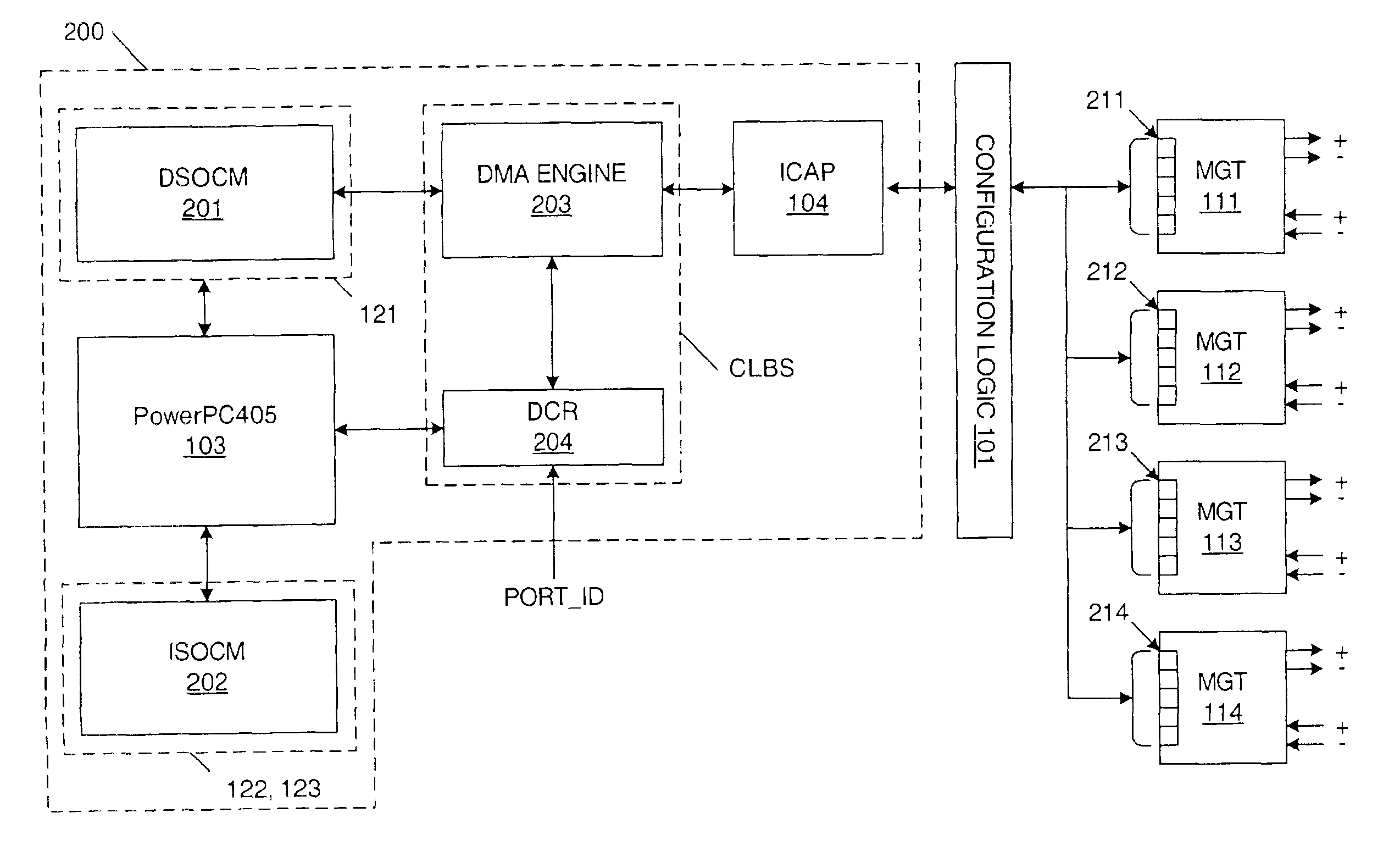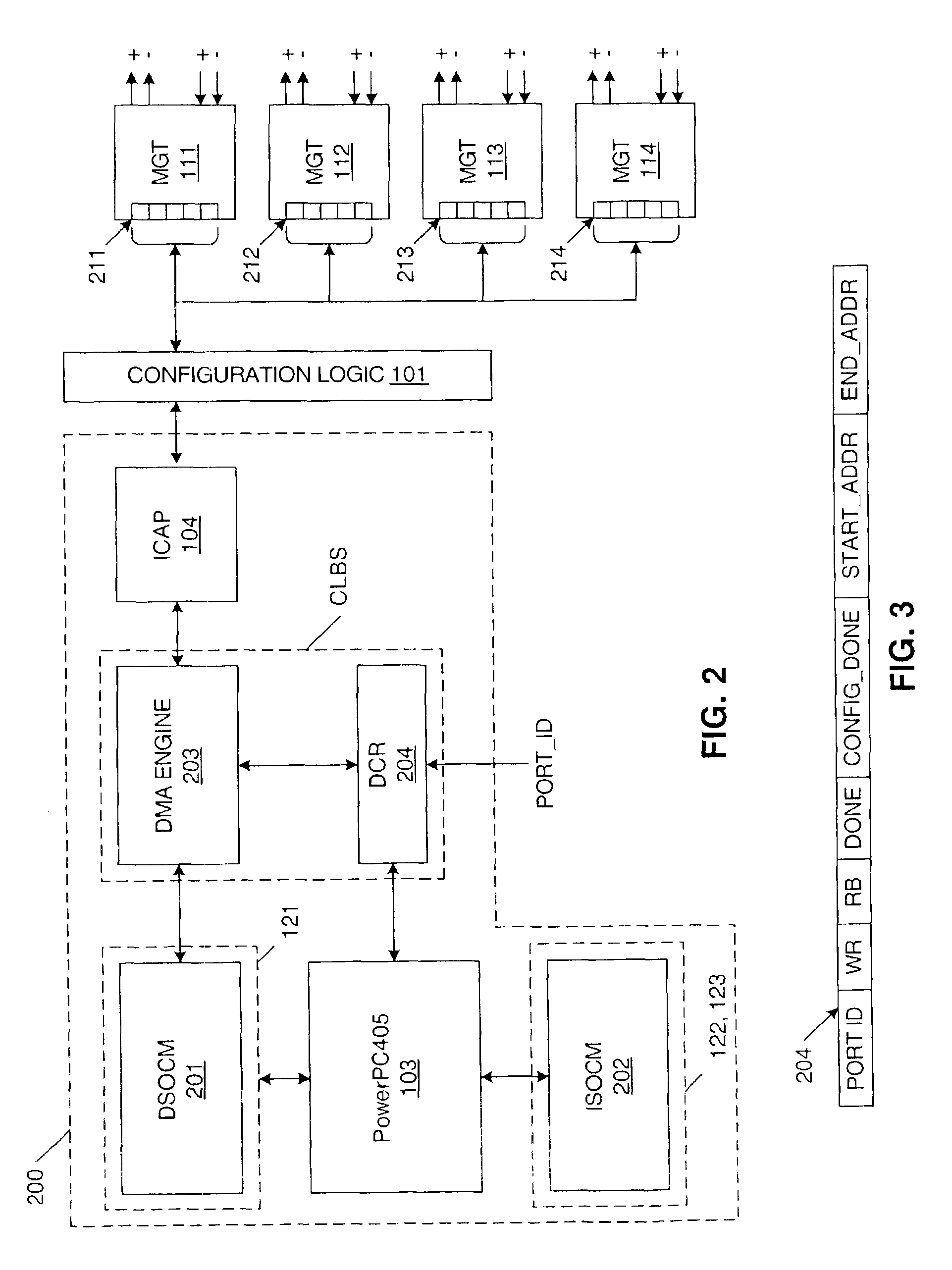Partial reconfiguration of a programmable logic device using an on-chip processor
a programmable logic and on-chip processor technology, applied in the direction of computation using denominational number representation, pulse technique, instruments, etc., can solve the problems of limiting the flexibility of the partial reconfiguration process, inefficient storage of configuration data values in two separate external memories, and inconvenient operation
- Summary
- Abstract
- Description
- Claims
- Application Information
AI Technical Summary
Benefits of technology
Problems solved by technology
Method used
Image
Examples
Embodiment Construction
[0023]In accordance with the described embodiments of the present invention, a programmable logic device having an on-chip processor is configured to implement an efficient partial reconfiguration scheme. In the described embodiments, a conventional Virtex-II™ Pro FPGA, available from Xilinx, Inc., is used to implement the partial reconfiguration scheme. Thus, the present invention is described in connection with the use of FPGA 100 (FIG. 1). Although the present invention is described in connection with the partial reconfiguration of FPGAs, it is understood that the partial reconfiguration scheme of the present invention may also be implemented using other programmable logic devices.
[0024]The partial reconfiguration scheme is described in connection with the partial reconfiguration of the multi-gigabit transceivers (MGTs) 111-114 of FPGA 100. However, it is understood that other elements of FPGA 100 can be partially reconfigured in accordance with the principles described below.
[00...
PUM
 Login to View More
Login to View More Abstract
Description
Claims
Application Information
 Login to View More
Login to View More - R&D
- Intellectual Property
- Life Sciences
- Materials
- Tech Scout
- Unparalleled Data Quality
- Higher Quality Content
- 60% Fewer Hallucinations
Browse by: Latest US Patents, China's latest patents, Technical Efficacy Thesaurus, Application Domain, Technology Topic, Popular Technical Reports.
© 2025 PatSnap. All rights reserved.Legal|Privacy policy|Modern Slavery Act Transparency Statement|Sitemap|About US| Contact US: help@patsnap.com



